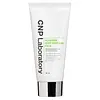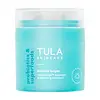What's inside
What's inside
 Key Ingredients
Key Ingredients

 Benefits
Benefits

 Concerns
Concerns

 Ingredients Side-by-side
Ingredients Side-by-side

Water
Skin ConditioningPropanediol
SolventButylene Glycol
Humectant1,2-Hexanediol
Skin ConditioningDiglycerin
HumectantDiethoxyethyl Succinate
SolventGlycerin
HumectantPanthenol
Skin ConditioningPentylene Glycol
Skin ConditioningAcrylates/C10-30 Alkyl Acrylate Crosspolymer
Emulsion StabilisingSodium Carbomer
Emulsion StabilisingAmmonium Acryloyldimethyltaurate/Vp Copolymer
Tromethamine
BufferingGlycosaminoglycans
EmollientSodium Hydroxide
BufferingCitric Acid
BufferingUrea
BufferingFructose
HumectantMaltose
MaskingAllantoin
Skin ConditioningSodium Hyaluronate
HumectantTrehalose
HumectantSodium PCA
HumectantSodium Chloride
MaskingSodium Lactate
BufferingMadecassoside
AntioxidantHydroxyphenyl Propamidobenzoic Acid
Skin ConditioningBeta-Glucan
Skin ConditioningSodium Polyacrylate
AbsorbentPvm/Ma Copolymer
Emulsion StabilisingGlucose
HumectantEthylhexylglycerin
Skin ConditioningAscorbyl Palmitate
AntioxidantDisodium EDTA
Water, Propanediol, Butylene Glycol, 1,2-Hexanediol, Diglycerin, Diethoxyethyl Succinate, Glycerin, Panthenol, Pentylene Glycol, Acrylates/C10-30 Alkyl Acrylate Crosspolymer, Sodium Carbomer, Ammonium Acryloyldimethyltaurate/Vp Copolymer, Tromethamine, Glycosaminoglycans, Sodium Hydroxide, Citric Acid, Urea, Fructose, Maltose, Allantoin, Sodium Hyaluronate, Trehalose, Sodium PCA, Sodium Chloride, Sodium Lactate, Madecassoside, Hydroxyphenyl Propamidobenzoic Acid, Beta-Glucan, Sodium Polyacrylate, Pvm/Ma Copolymer, Glucose, Ethylhexylglycerin, Ascorbyl Palmitate, Disodium EDTA
Water
Skin ConditioningGlycerin
HumectantButylene Glycol
HumectantDiglycerin
HumectantMethyl Gluceth-20
HumectantNiacinamide
SmoothingPentylene Glycol
Skin ConditioningLactococcus Ferment Lysate
Skin Conditioning3-O-Ethyl Ascorbic Acid
Skin ConditioningBetula Alba Juice
AstringentPanthenol
Skin ConditioningTetrahydrodiferuloylmethane
AntioxidantBeta Vulgaris Root Extract
Skin ConditioningAscorbyl Glucoside
AntioxidantInulin
Skin ConditioningMandelic Acid
AntimicrobialLactic Acid
BufferingCurcuma Longa Root Extract
MaskingHippophae Rhamnoides Fruit Extract
Skin ConditioningCopper Gluconate
Skin ConditioningMagnesium Aspartate
Skin ConditioningZinc Gluconate
Skin ConditioningPrunus Armeniaca Kernel Oil
MaskingLactobacillus Ferment
Skin ConditioningLactobacillus
Skin ConditioningAlpha-Glucan Oligosaccharide
CleansingTromethamine
BufferingSodium Polyacrylate Starch
AbsorbentCarbomer
Emulsion StabilisingAcrylates/C10-30 Alkyl Acrylate Crosspolymer
Emulsion StabilisingXanthan Gum
EmulsifyingAmmonium Acryloyldimethyltaurate/Vp Copolymer
Ethylhexylglycerin
Skin ConditioningTriethyl Citrate
Masking1,2-Hexanediol
Skin ConditioningPolymnia Sonchifolia Root Juice
Skin ConditioningCitrus Aurantium Dulcis Peel Oil
MaskingHelianthus Annuus Seed Oil
EmollientMaltodextrin
AbsorbentSodium Benzoate
MaskingSodium Chloride
MaskingCitrus Reticulata Peel Oil
MaskingEugenia Caryophyllus Flower Extract
AstringentVanilla Planifolia Fruit Extract
Skin ConditioningPhenoxyethanol
PreservativeTocopherol
AntioxidantCI 19140
Cosmetic ColorantCI 17200
Cosmetic ColorantWater, Glycerin, Butylene Glycol, Diglycerin, Methyl Gluceth-20, Niacinamide, Pentylene Glycol, Lactococcus Ferment Lysate, 3-O-Ethyl Ascorbic Acid, Betula Alba Juice, Panthenol, Tetrahydrodiferuloylmethane, Beta Vulgaris Root Extract, Ascorbyl Glucoside, Inulin, Mandelic Acid, Lactic Acid, Curcuma Longa Root Extract, Hippophae Rhamnoides Fruit Extract, Copper Gluconate, Magnesium Aspartate, Zinc Gluconate, Prunus Armeniaca Kernel Oil, Lactobacillus Ferment, Lactobacillus, Alpha-Glucan Oligosaccharide, Tromethamine, Sodium Polyacrylate Starch, Carbomer, Acrylates/C10-30 Alkyl Acrylate Crosspolymer, Xanthan Gum, Ammonium Acryloyldimethyltaurate/Vp Copolymer, Ethylhexylglycerin, Triethyl Citrate, 1,2-Hexanediol, Polymnia Sonchifolia Root Juice, Citrus Aurantium Dulcis Peel Oil, Helianthus Annuus Seed Oil, Maltodextrin, Sodium Benzoate, Sodium Chloride, Citrus Reticulata Peel Oil, Eugenia Caryophyllus Flower Extract, Vanilla Planifolia Fruit Extract, Phenoxyethanol, Tocopherol, CI 19140, CI 17200
Ingredients Explained
These ingredients are found in both products.
Ingredients higher up in an ingredient list are typically present in a larger amount.
1,2-Hexanediol is a synthetic liquid and another multi-functional powerhouse.
It is a:
- Humectant, drawing moisture into the skin
- Emollient, helping to soften skin
- Solvent, dispersing and stabilizing formulas
- Preservative booster, enhancing the antimicrobial activity of other preservatives
Acrylates/C10-30 Alkyl Acrylate Crosspolymer is a synthetic polymer. It is used to thicken and improve the texture of products. Due to its properties, it can prevent water and oil ingredients from separating.
Ammonium Acryloyldimethyltaurate/Vp Copolymer (let's call it AAVC for short) is a synthetically created polymer. It's used as a film-forming agent and used to thicken the consistency of products.
AAVC is able to increase the consistency and viscosity of products due to its large molecule size. It also prevents ingredients from separating.
Butylene Glycol (or BG) is used within cosmetic products for a few different reasons:
Overall, Butylene Glycol is a safe and well-rounded ingredient that works well with other ingredients.
Though this ingredient works well with most skin types, some people with sensitive skin may experience a reaction such as allergic rashes, closed comedones, or itchiness.
Learn more about Butylene GlycolDiglycerin is a humectant. It is derived from glycerin, which is naturally found in your skin.
As a humectant, it helps draw moisture to the skin from the air.
Ethylhexylglycerin (we can't pronounce this either) is commonly used as a preservative and skin softener. It is derived from glyceryl.
You might see Ethylhexylglycerin often paired with other preservatives such as phenoxyethanol. Ethylhexylglycerin has been found to increase the effectiveness of these other preservatives.
Glycerin is already naturally found in your skin. It helps moisturize and protect your skin.
A study from 2016 found glycerin to be more effective as a humectant than AHAs and hyaluronic acid.
As a humectant, it helps the skin stay hydrated by pulling moisture to your skin. The low molecular weight of glycerin allows it to pull moisture into the deeper layers of your skin.
Hydrated skin improves your skin barrier; Your skin barrier helps protect against irritants and bacteria.
Glycerin has also been found to have antimicrobial and antiviral properties. Due to these properties, glycerin is often used in wound and burn treatments.
In cosmetics, glycerin is usually derived from plants such as soybean or palm. However, it can also be sourced from animals, such as tallow or animal fat.
This ingredient is organic, colorless, odorless, and non-toxic.
Glycerin is the name for this ingredient in American English. British English uses Glycerol/Glycerine.
Learn more about GlycerinPanthenol is a common ingredient that helps hydrate and soothe the skin. It is found naturally in our skin and hair.
There are two forms of panthenol: D and L.
D-panthenol is also known as dexpanthenol. Most cosmetics use dexpanthenol or a mixture of D and L-panthenol.
Panthenol is famous due to its ability to go deeper into the skin's layers. Using this ingredient has numerous pros (and no cons):
Like hyaluronic acid, panthenol is a humectant. Humectants are able to bind and hold large amounts of water to keep skin hydrated.
This ingredient works well for wound healing. It works by increasing tissue in the wound and helps close open wounds.
Once oxidized, panthenol converts to pantothenic acid. Panthothenic acid is found in all living cells.
This ingredient is also referred to as pro-vitamin B5.
Learn more about PanthenolPentylene glycol is typically used within a product to thicken it. It also adds a smooth, soft, and moisturizing feel to the product. It is naturally found in plants such as sugar beets.
The hydrophilic trait of Pentylene Glycol makes it a humectant. As a humectant, Pentylene Glycol helps draw moisture from the air to your skin. This can help keep your skin hydrated.
This property also makes Pentylene Glycol a great texture enhancer. It can also help thicken or stabilize a product.
Pentylene Glycol also acts as a mild preservative and helps to keep a product microbe-free.
Some people may experience mild eye and skin irritation from Pentylene Glycol. We always recommend speaking with a professional about using this ingredient in your routine.
Pentylene Glycol has a low molecular weight and is part of the 1,2-glycol family.
Learn more about Pentylene GlycolChances are, you eat sodium chloride every day. Sodium Chloride is also known as table salt.
This ingredient has many purposes in skincare: thickener, emulsifier, and exfoliator.
You'll most likely find this ingredient in cleansers where it is used to create a gel-like texture. As an emulsifier, it also prevents ingredients from separating.
There is much debate on whether this ingredient is comedogenic. The short answer - comedogenic ratings don't tell the whole story. Learn more about comegodenic ratings here.
The concensus about this ingredient causing acne seems to be divided. Research is needed to understand if this ingredient does cause acne.
Scrubs may use salt as the primary exfoliating ingredient.
Learn more about Sodium ChlorideTromethamine helps balance the pH and improve the texture of a product. It is synthetically created.
As an emulsifier, Tromethamine prevents oil and water ingredients from separating. This helps stabilize the product and elongate a product's shelf life. Tromethamine also makes a product thicker.
Tromethamine helps balance the pH level of a product. Normal pH level of skin is slightly acidic (~4.75-5.5). The acidity of our skin is maintained by our glands and skin biome. Being slightly acidic allows our skin to create an "acid mantle". This acid mantle is a thin barrier that protects our skin from bacteria and contaminants.
Oral Tromethanmine is an anti-inflammatory drug but plays the role of masking, adding fragrance, and/or balancing pH in skincare.
1,3-Propanediol, 2-amino-2-(hydroxymethyl)-
Learn more about TromethamineWater. It's the most common cosmetic ingredient of all. You'll usually see it at the top of ingredient lists, meaning that it makes up the largest part of the product.
So why is it so popular? Water most often acts as a solvent - this means that it helps dissolve other ingredients into the formulation.
You'll also recognize water as that liquid we all need to stay alive. If you see this, drink a glass of water. Stay hydrated!
Learn more about Water